By Ted J. Rau and originally published on medium.com
This blog post connects sociocracy, a participatory governance system, to the Ostrom principles for sustainable governance of CPR (common-pool resources). Sociocracy and Ostrom’s principles share very basic values and observations, which makes sociocratic governance a perfect fit for CPR governance.
If you are not familiar with Ostrom’s work that earned her the Nobel prize: Ostrom investigated how communities succeed or fail at managing resources that are shared — for instance that piece of land in a small village where everyone’s cows graze: In studying those cases, there had been some debate on whether those shared efforts are inherently bound to fail (see the tragedy of the commons). If everyone can let their cows graze on the commons, wouldn’t too many people over-use that shared resource? Countering this pessimistic expectation, some of these common resources are actually well-maintained. But which ones? Ostrom distilled 8 characteristics from all the cases where resource-sharing worked well and sustainably to find out what in CPR management makes the difference.
When I first read the Ostrom principles in 2016, it occurred to me that what is being asked for in the principles is exactly what a sociocratic implementation delivers. Since my work is all about making links where they suggest themselves and weaving related networks together, this article is about the connection of the commons and the nuts and bolts of governance as equals .
Sociocracy
For the readers who are not familiar with sociocracy, the basic tools of Sociocracy are:
- Consent decision-making. Policy decisions are made by consent, which differs slightly from consensus. In consensus, everyone is trying to find agreement, often trying to find comon ground for their preferred outcome. In consent, we shift our energy towards finding common ground that is safe to try and that no member has an objection to.
- Small group mandate: All members of a governing body are organized in circles. Those circles have full authority in their domain. All decisions are made on the most local level possible.
- Linked circles: Whenever there are two related circles, two members will be full members of both circles. That way, information can flow easily and no group can over-power the other.

All decisions in Sociocracy are dynamic, including the organizational structure. Inviting feedback, revision and adaptation are part of a sociocratic, living organization. These tools and principles create an inclusive, learning organization that can respond fast because decisions are made locally.
Comparing the Ostrom principles and Sociocratic practice
Back to the commons: what makes a sustainable governance of a CPR (Common Pool Resource) successful? The Ostrom principles are distilled features of successful management of common goods. We list each one below, adding our comments of how sociocracy implements those principles.
For illustration — and for fun! — we will explore how the principles and how sociocracy applies to an example application: an office fridge. Office fridges are tangible examples of CPR: everyone in the office has access but (typically) no single individual or group owns the fridge: an office fridge is a common good. It gets even more interesting: even if the office itself is run very hierarchically; oftentimes, this does not carry over to the office fridge. The employees’ needs around food don’t depend on their rank in the organization. Office fridges are islands of equality and thus an interesting case to look at — and all the good and the bad, the pretty and the ugly that can happen with CPR is familiar to many people who have ever shared a fridge!

Ostrom Principle 1: Clearly defined boundaries
The first principle of successful CPR management points to the clear definition of what the CPR entails and who/what is outside of the boundaries of the CPR. In the example of an office fridge, that means, in order to successfully run an office fridge, we have to know who puts their stuff in there and who doesn’t. (On the flipside, can you imagine what happens if lots of short-term interns leave their food in the fridge?!)
In Sociocracy, boundary-setting is captured by membership — circle membership (and membership of the organization) has to be defined. In a circle that is open to walk-ins, progress can be too easily undone by last-minute objections by people who have not been part of the process leading up to a decision and throw a monkey-wrench into the decision-making process. Most volunteer groups have experience with that. Sociocracy protects decision-making groups and keeps them functionable by requiring defined membership. Of course, guests who are not members of a circle will be welcomed and heard. However, they will not have consent rights. Every circle has clearly defined domain and aim, therefore the question of authority and of membership is addressed in the same way Ostrom observed for successful shepardship of CPR.
Ostrom principle 2: Rules regarding the appropriation and provision of common resources that are adapted to local conditions
All CPR are different, depending on the context, capacity, size. In the same way, every part of a CPR can have its own idiosyncracies that need to be taken into account for efficient oversight. The office fridge on the first floor might have different rules than the on the fifth floor, and that’s ok. We want people to be able to meet their needs in their own way. For instance, if some co-workers might want a separate vegetarian-only fridge, they can do that if it does not harm the others. If a group decides to make labels for food a requirement, that applies to their fridge only.
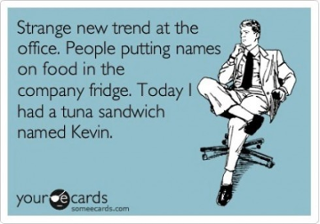
In Sociocracy, we localize every decision. Every circle makes their own policies for their own domain. The name “socio-cracy” translates to “those who associate together, decide together”, giving each circle in each domain the authority to make decisions that make sense on their level and in their specific context. There are no top-down decisions, no distant group ruling into your decision-making group. Decisions are made by the people who stand in relationship with the actual resource and task that is being regulated.
Ostrom principle 3: Collective-choice arrangements that allow most resource appropriators to participate in the decision-making process
Management of CPR works best if all (or most) participants have a voice. This is the heart piece of Sociocracy: collaborative decision-making on basis on consent. In Sociocracy, no voice can be ignored. We hear everyone in our circle because we make decisions only when no one in the circle objects. And through linking between circles, we also hear everything from other circles.
Looking at the fridge, it is obvious that unilateral decisions will not be sustainable for an office fridge. Any imposed and removed rule will be undermined. In the long run, there is just no way around hearing each other.
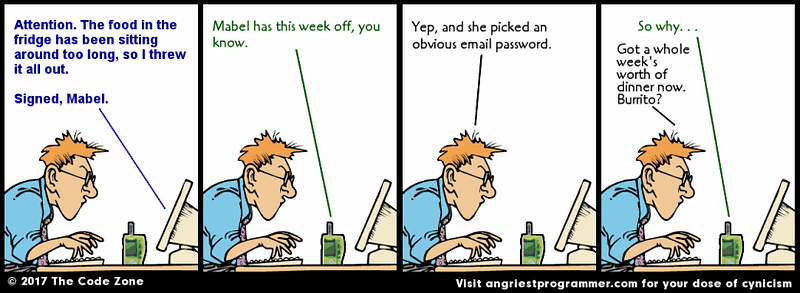
Ostrom principle 4: Effective monitoring by monitors who are part of or accountable to the appropriators
The question of accountability is important for every organization, and the commons are of course no exception. Policy only makes sense if people are accountable to that policy.
What is sociocracy’s answer to that? The circle which makes policy will also factor in how to measure the success of their policy. In Sociocracy, this happens within a bigger context on two levels.

- For a decision within a circle’s domain that affects a wider group, the circle will invite feedback from the larger group in order to work that feedback into the proposal. Thus, a decision that is made without being embedded in the organization and supported by all members, will not even be made. When every member can be heard, there is no reason to not follow the rules in the first place. More buy-in always leads to more accountability.
- Additionally, a sociocratic circle invites feedback after the policy is effective. Gathering information on the effectiveness of our decision will be built into the proposal and will be evaluated at a specific, agreed upon time. Feedback and evaluation are built into the system in many areas: review of policies at a given date, evaluation of meetings, inviting feedback to proposals, perfor-mance reviews for members serving in roles, all those measures serve to keep accountability up before and after a decision is made.
Ostrom principle 5: A scale of graduated sanctions for resource appropriators who violate community rules
This is the continuation of the previous principle. What happens if someone does not act according to standing policy? Again, this will be built into the proposal. For instance, how much will late fees be? What if someone does not pay repeatedly? What is the next sanction we want to take?
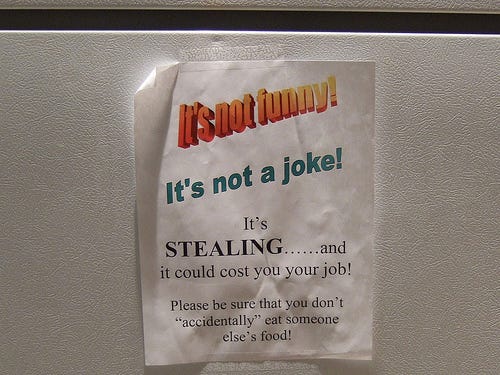
There is more to say here though. This principle only speaks to negative feedback in the form of sanctions. In Sociocracy, we also work with “positive” feedback. Feedback and data in itself is neutral. If in any evaluation, we talk about potential improvement. We are not only talking about what is not working but we are talking about what can be better than a current, functioning state. Continuous improvement is a key element in Sociocracy which adds potential to improve stewardship of any CPR.
In the example of an office fridge, there has to be policy around what happens if someone is leaving food in the fridge for too long and it gets moldy. Any policy will have to address that. If everyone is part of that decision, we can trust that the policy and sanctions will be reasonable. If someone has a good idea on how to improve the policy, the governing body should have a way of harvesting that information.
Ostrom principle 6: Mechanisms of conflict resolution that are cheap and of easy access
Typically, organizations will have a way of mediation or conflict resolution. From a sociocratic point of view, again, feedback is the key word here. Many sources of conflict can be caught early in the process. For that, sociocracy puts in place opportunities to give and receive feedback on a regular basis — ideally before any conflict can build up. Regular meeting evaluations, performance reviews, open elections, policy review, these are all tools that are used on a regular basis in a sociocratic organization. If this circle-internal process is not enough, any circle can either form a helping circle (aka ad hoc group), or it can request help from its parent circle. With parent and child and sibling circles, the support system for any circle is already baked into the structure. A formal “mediation circle” is not mandatory in Sociocracy but can easily be formed as an additional resource if an organization considers this helpful or necessary.
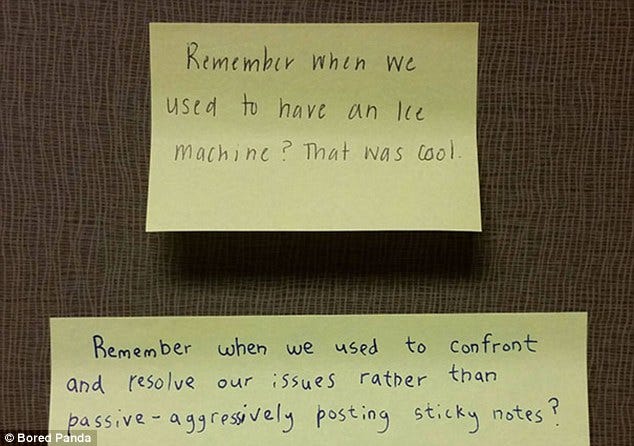
Ostrom principle 7: In the case of larger common-pool resources, organization in the form of multiple layers of nested enterprises, with small local CPRs at the base level.
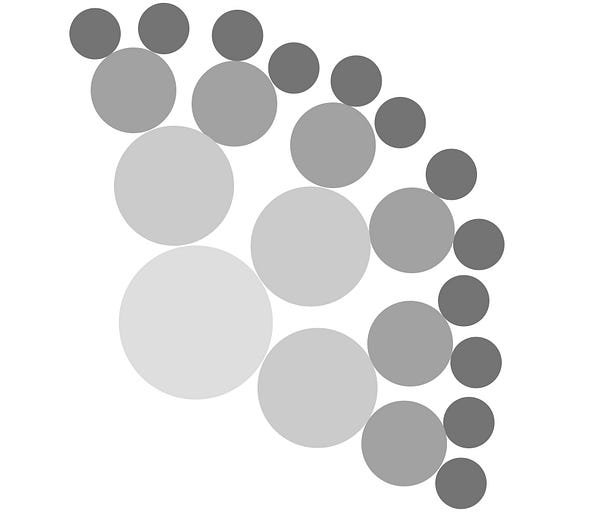
In the case of an office fridge, this might be overdone — but there are office fridge policies that assign shelves to (groups) of people. Then every shelf could make its own policy, while representatives from each “shelf circle” would make policy that affect the entire fridge (like what temperature it is going to be set on).
In sociocracy, every circle is linked to a parent circle that has general oversight over matters of the overarching domain. That makes sense in particular when groups cannot find consent on policy and the desired level of accountability, or if there are different needs within the same fridge (like a vegetarian shelf etc). Every circle has a piece of the whole, and linking prevents silos in the organization. A place for everything, and everything in its place.
Ostrom principle 8: Self-determination of the community recognized by higher-level authorities
The Commons have to be acknowledged as such from all authorities. Ultimately, full authority cannot be shared with any other body. For example, if the office fridge is formally managed by an official body and by the people themselves, there will be friction. This is true for any CPR.
Self-governance is essential in Sociocracy. Since decisions are made by the people working together, by definition this organization has to be self-governed. Sociocratic organizations own themselves, just like CPR belong to everybody. This creates issues in organizations that introduce sociocracy only half-heartedly. Self-governance means that it is not enough to delegate tasks — we have to truly distribute the authority so teams will be empowered to make decisions that make sense in their sphere.




